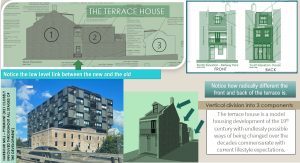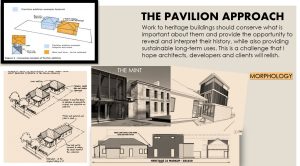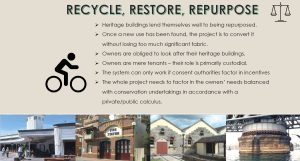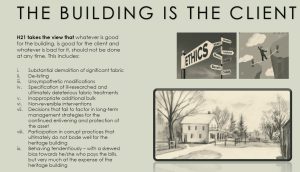Professional Associations
Having worked in the heritage space for the better part of thirty years, I have come to rely upon five home truths when it comes to dealing with heritage buildings.
1. Always look for opportunities for conservation.
The applicant who seeks to introduce change into a heritage setting is always happy to pay for conservation works if there is some sort of uplift for him or her. Developers provide the opportunity for conservation, but they need to be respected and thanked for the conservation works that they are usually required to do by the council. At the same time, development must be limited to parts of the building with less heritage significance.

2. The owners of heritage buildings are custodians of the heritage asset.
They need to be treated with respect and encouraged by the community via council to safeguard the asset in perpetuity. When the owners of a heritage building decide to sell the property, the incoming new owner will take the baton to continue in the role of custodian. More work needs to be done by the government in promoting heritage as a public good in society.

3. Additions and extensions to heritage buildings should be done in the form of a pavilion.
This means physical separation of the new from the old via an under-eaves link so that there is no confusion between the original fabric and the introduced fabric.

4. Even if a heritage-listed asset is privately owned, it really belongs to the community.
It is usually the community that agitates for the protection of the heritage buildings. Councils are aware of this.

5. The heritage asset is the client.
When we, as heritage architects and consultants, deal with modifying heritage buildings, we should always have the building’s best interests at heart. This means treating all significant fabric with the utmost care and concern and only ever making appropriate and reversible changes.

Related Articles

Why doesn’t NSW adopt good design principles for heritage buildings?
There ought to be a qualification for all designs in relation to heritage buildings. Our heritage-listed items and buildings in…
Read more
Time to Rationalise our Heritage Conservation Areas (NSW)
The recent Not-In-My-Back-Yard (NIMBY) and Yes-In-My-Back-Yard (YIMBY) debate on social media and the tabloid press has highlighted the fragility of…
Read more
Heritage, Gentrification, Urbanisation & Tourism
Historic conservation, writes Regina Bures (see reference below), is frequently associated with gentrification: the incursion of middle-class "gentry" on an…
Read more
Heritage is indicative of truths as they emerge from contemporary practice
How often is it said that we view the past through our own eyes. Here we are in 2018 viewing…
Read more

Need help getting started?
Check out our guides.

Complete the form below to contact us today.









